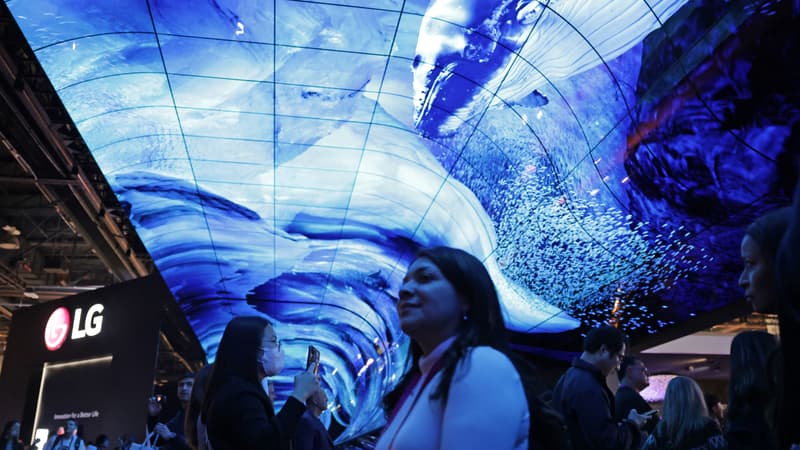The CES in Las Vegas resists! Increasingly shunned by the big brands that now prefer to launch their own events, the world’s leading technology fair has, however, recovered its former splendor… at least in part.
Because this 2023 edition was above all the first post-covid to be completely face-to-face. Last year, the wave of Omicron triggered cascading recalls from major brands including Microsoft, Google and Lenovo. This time, all, or almost, were there and now it is time to take stock of this 2023 vintage.
· A new motor show?
Now loaded with a host of sensors, cars have had a spot of choice for several years at CES. Thus, for this 2023 edition, most of the main manufacturers have moved to present their electric vehicles or their connected vehicle projects.
Among the big announcements, the famous car co-manufactured by Honda and Sony, called Afeela. If the design of this sedan, announced for 2025, does not clash, it promises plenty of technological equipment, starting with a PlayStation 5 console installed in its bowels. Above all, it will be equipped with a Lidar and 45 cameras to enable level 3 autonomous driving. how is mercedes doing today on certain road sections and under certain conditions in Germany.
Another pleasant surprise, BMW presented a technology to automatically change the color of its bodywork. A total of 32 different colors are possible for your vehicle.
Among the other CES announcements, we find the highly futuristic Peugeot concept car, called Inception, but also a prototype of future electric pick-ups from RAM, the Stellantis brand.
Screens getting thinner…
This is the great trend that the program has marked, which is always important for the television sector. In addition to increasingly fine technologies, impressive in terms of images and contrasts, and increasingly expensive, manufacturers are now looking to get rid of the cables that pollute the landscape of the living room. LG has thus presented a large 4k screen completely devoid of connectors on the back. The trick is the presence of a remote box into which you plug your internet box or console and which sends the information wirelessly to the TV. There remains the power cable that cannot disappear and is hidden in the foot of the television.
Displace, an American startup, however, caused a sensation by offering an impressive model completely with batteries! The screen can thus be transported (although it weighs 12 kg) and last, in theory, a month at a rate of 6 hours of walking per day, before having to recharge the 4 batteries.
…and always more flexible
On more modest screens (smartphones or tablets), CES also shows color: if the folding screen is no longer a novelty, Samsung introduced a screen that could stretch, a way to make the screen a little larger before retracting it and then folding it. The technology is still in the prototype stage.
widespread connected health
Another important theme of the program continues to be connected health. And it was a French company, Withings, which carried out the event with a sensor to analyze its urine U-Scan. Placed in the bowl, it can provide a wealth of information about your health.
Another French startup, BHeart, offers a bracelet to turn all watches into health trackers. Great advantage: it produces 100% of its autonomy using body heat or ambient light.
For its part, the South Korean company 10Minds has presented the new version of the Motion Pillow anti-snoring pillow. It works by detecting disturbing noises and uses inflatable cushions that reposition the sleeper’s head to the side to clear their airways and stop snoring.
More ambitious, the Metz-based startup I-Virtual has developed Caducy, a technology called “photoplethysmography” that allows, using a simple 30-second selfie video, to measure vital parameters remotely. The operation is very simple: thanks to this short sequence, Caducy can calculate six vital parameters, including heart rate, respiratory rate and blood pressure. The objective of this tool is to improve prevention and diagnosis and guarantee better home monitoring of patients with chronic diseases.
Always more accessibility
It was a bit of a surprise from Sony. The brand presented at CES Leonardo, its PlayStation 5 controller for people with disabilities. The “Leonardo project for PlayStation 5” was developed with experts on disability issues, but also with interested players, associations and game developers, explains Sony, which has not yet communicated a release date or price.
Still in accessibility, Tech&Co was able to test two smart wheelchairs. One of them, Scewo, had the particular advantage of being able to climb sidewalks, while Whill is an autonomous chair that travels on its own avoiding obstacles.
Source: BFM TV


